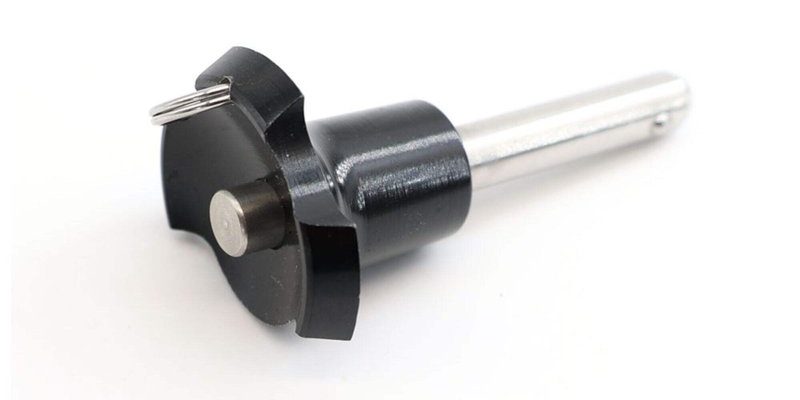
Think of your push-button privacy lock as a simple mechanism with a few important parts. When it works, it gives you the peace you need, but when it doesn’t, it can feel like you’re trapped in a tiny room. Let’s break down some common troubleshooting steps to help you get that lock working smoothly again.
Understanding How Push-Button Privacy Locks Work
At its core, a push-button privacy lock is pretty straightforward. When you press the button, it engages a latch inside the door. This latch is what keeps the door closed and gives you that sweet privacy. When you’re ready to open the door, you usually just twist the knob or push the button again to release it.
You might be wondering, why does it sometimes fail? Well, like any mechanical system, locks can wear down or get jammed. Dust, grime, and wear and tear can all interrupt that smooth operation. It’s a bit like a car engine; when everything is running well, it’s a joy to drive. But if one part isn’t working, the whole system can feel off.
Another thing to keep in mind is that there are different types of privacy locks. While the basic functions tend to be similar, some locks may have more complex mechanisms. If you’re dealing with a specific brand, like Kwikset or Schlage, it can pay to look up the model number online for troubleshooting guides tailored to your lock.
Checking for Obstructions
The first thing you’ll want to do is inspect the lock and surrounding area for any obstructions. Sometimes, it’s just a matter of dust or debris blocking the button mechanism. Grab a flashlight and take a closer look.
- Check the button: Make sure it’s not stuck or jammed with dirt.
- Inspect the door frame: Sometimes, the door can warp, making it hard for the latch to align properly.
- Look for misalignments: If the latch doesn’t line up with the strike plate, it can cause issues.
If you notice any obstructions, gently clean the area. You can use a small brush or even a can of compressed air to clear out any buildup. This simple step can often resolve the issue right away.
Resetting the Lock
Here’s the thing: many privacy locks have a reset mechanism built into them. It’s like giving your lock a little reboot. To reset, press and release the button a few times. This method helps to realign the internal parts. If you’ve got a more complex lock with electronic components, consult the manual for specific reset instructions.
After resetting, try to engage and release the lock again. If it works, great! If not, don’t stress just yet. Sometimes, locks can get stuck in their own little world, and a few attempts will help unstick them.
Checking the Door Alignment
If your push-button lock is still stubborn, it might be due to the door not aligning correctly with the latch. A misaligned door can prevent the latch from fully engaging or releasing. Here’s how to check it:
1. Close the door slowly: Watch how the latch meets the strike plate on the door frame.
2. Look for gaps: Is there a noticeable gap between the latch and the strike plate? If so, that’s your problem.
3. Adjust the hinges: Sometimes, tightening or loosening the screws on the hinges can shift the door into alignment.
If your door has been misaligned for a while, you might also consider adjusting the strike plate itself. This might require moving it slightly to ensure the latch fits properly. It’s a small adjustment that can make a big difference.
Examining the Internal Mechanism
If you’re still having trouble, it might be time to take a closer look at the internal mechanism of the lock. If you feel comfortable, you can remove the lock from the door. Here’s a brief overview of how to do that:
1. Unscrew the handle: Most push-button locks have screws that secure the handle. Remove them carefully.
2. Take out the lock cylinder: Gently pull out the lock cylinder from the door. Be cautious not to damage any internal components.
3. Inspect for wear: Look at the internal parts for any signs of wear or damage. Sometimes, a simple cleaning or lubrication can resolve the problem.
If you notice anything broken, you might need to replace that specific part. You can usually find replacement parts online based on the brand and model.
When to Call for Help
After trying these troubleshooting steps, if you’re still facing issues, it might be time to call in a professional. Here’s why:
– Some locks have more complex mechanisms that require expert knowledge.
– You might risk damaging the lock or door if you continue to troubleshoot without the right skills.
– A locksmith can quickly diagnose the issue and fix it without further hassle.
Remember, it’s okay to ask for help. Locks are an essential part of your home’s security, and you want them working perfectly.
Prevention Tips for the Future
To keep your push-button privacy lock functioning well, consider these simple preventive measures:
– Regular cleaning: Regularly wipe down the button and surrounding areas to prevent jams.
– Lubrication: Use a silicone spray or graphite powder on the mechanism once a year. This keeps it from getting sticky.
– Check alignment: Periodically check that your door remains aligned and doesn’t need any adjustments.
These small efforts can save you from future headaches and keep your lock working smoothly for years to come.
In closing, troubleshooting a push-button privacy lock that won’t release doesn’t have to be daunting. With a little patience, you can tackle most issues head-on. Whether it’s cleaning, resetting, or inspecting the internal mechanisms, taking the time to address these problems can restore your lock’s functionality. And remember, if all else fails, don’t hesitate to reach out to a pro. After all, everyone deserves a little peace and quiet behind a closed door.
